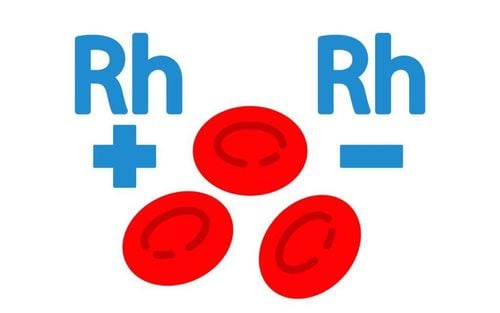This is an automatically translated article.
Prolactin is a hormone that plays an important role in lactation, metabolism and especially reproductive function in women. Hyperprolactinemia is a common endocrine disease and is also one of the possible causes of female infertility.1. What is hyperprolactinemia?
Hyperprolactinemia is when there is too much prolactin in the blood. Prolactin is a hormone produced by the pituitary gland. In women, prolactin helps regulate menstruation and helps breasts develop and produce milk.Increased prolactin in the blood reduces estrogen and interferes with ovulation, causing irregular or absent menstrual periods and affecting fertility. This condition also leads to low bone density and causes non-pregnant women to produce breast milk.
Prolactin levels will also have certain changes in each stage of a woman.
Standard prolactin levels:
Adult women: 127 – 637 μIU/mL Pregnant women: 200 – 4500 μIU/mL Menopause: 30 – 430 μIU/mL Hypothalamic axis disorders - pituitary gland leads to hyperprolactinemia. This condition is determined by a variety of causes.

Tăng prolactin trong máu khiến phụ nữ không mang thai sản xuất sữa mẹ
2. What causes hyperprolactinemia?
Hyperprolactinemia sometimes has no identifiable cause. Here are some common causes:A noncancerous tumor in the pituitary gland that produces high levels of prolactin. This affects 50-60% of women with hyperprolactinemia. (in very rare cases, the tumor may be cancerous.) Overactive cells in the pituitary gland Underactive thyroid gland (hypothyroidism) Certain medications include depression and blood pressure High Chest damage (eg, from shingles or surgical scarring) Renal failure: Decreased degeneration, decreased prolactin clearance Cirrhosis: Damage to hypothalamic dopamine producing regions due to encephalopathy Estradiol: causes hypertrophy and lactotrophe cell hyperplasia (PRL production), negative feedback on hypothalamic neuronal dopamine (decreases dopamine which is an inhibitor of prolactin production). Prolactin levels can also be elevated after you eat too much meat, after sex, nipple stimulation, after exercise, or under stress Due to increased serum estradiol levels during pregnancy, Women during pregnancy are at increased risk of prolactin during this period. Prolactin levels can return to normal around 6 weeks after birth. Prolactin levels in the blood increase during lactation by nipple stimulation. Hyperprolactinemia will prevent or inhibit the normal rhythm of GnRH secretion, in addition, increase dopaminergic activity in the hypothalamus leading to levels of FSH (follicle growth hormone) and LH (ovulation and support hormone) corpus luteum) is low or not effective enough. Thereby causing ovulation disorders, menstrual cycle disorders, no ovulation, amenorrhea or more dangerous hypogonadism.
3. What are the symptoms of hyperprolactinemia?
Some women don't have any symptoms. Some other cases may appear symptoms such as:Irregular menstruation or no period Breast milk secretion when not pregnant or breastfeeding Vaginal dryness Hot flashes Low bone density

Kinh nguyệt không đều hoặc không có kinh nguyệt là triệu chứng có thể gặp phải
4. How is hyperprolactinemia diagnosed?
A blood test can show if your prolactin level is higher than normal. If in doubt, you may be tested twice to be sure. Your doctor may also give you a physical exam and order an MRI to get pictures of your brain.5. What is the treatment for hyperprolactinemia?
If you have mild or no symptoms, you may not need treatment. But let your doctor know if your symptoms bother you or if you're having trouble getting pregnant. The first line of treatment for hyperprolactinemia is usually bromocriptine or cabergoline, two drugs called dopamine agonists that lower prolactin levels, shrink pituitary tumors, and restore ovulation and fertility.Bromocriptine is considered a safe treatment. It has a very low risk of birth defects and is recommended for women who are trying to conceive. You may need to take it for several months before your prolactin drops to normal. But once your prolactin levels are within normal limits, ovulation will resume and your period will return. Cabergoline is a newer drug and hasn't been prescribed for as long as bromocriptine, but it doesn't cause birth defects if taken during the first month of pregnancy. Cabergoline works in a similar way to bromocriptine and has been found to be more effective at reducing prolactin levels. It is usually prescribed to people who have not responded to bromocriptine or who have side effects from bromocriptine. When you're ready, you can try to conceive naturally or with the help of your doctor, depending on your fertility. If you don't conceive after ovulating for a few months, your doctor may recommend another treatment.
6. What is the treatment for hyperprolactinemia due to a large pituitary tumor?
Some women can develop tumors during pregnancy. Women with a pituitary tumor larger than 10mm in diameter who want to become pregnant often take a dopamine agonist, such as bromocriptine or cabergoline, to shrink the tumor before conception.If the tumor does not shrink or if it is causing symptoms such as vision problems, your doctor may recommend surgical removal of the tumor before pregnancy.

Một số phụ nữ có thể phát triển khối u tuyến yên trong khi mang thai
7. How long does it take to treat hyperprolactinemia?
Your doctor will start you on a low dose and increase it gradually as needed. Your prolactin levels will start to drop 2 to 3 weeks after you start treatment.With bromocriptine, you take it by mouth or vaginally once or twice daily until you become pregnant. If cabergoline is prescribed, you will take it once or twice a week until you become pregnant.
You can safely use either drug for several years, if needed. But once you stop taking the drug, the hyperprolactinemia may return. As an extra precaution, your doctor may stop taking bromocriptine or cabergoline if you find out that you are pregnant.
8. What are the side effects of hyperprolactinemia drugs?
While taking bromocriptine or cabergoline you may experience the following side effects:Low blood pressure Nausea Tension Fatigue Nasal congestion Depression Constipation Dizziness Headache Fainting Side effects can be more serious when started at the beginning of treatment or whenever the dose is increased but usually tapered off as your body gets used to the medicine. Until you get used to the medication, take it at night when you go to bed as you run the risk of fainting (due to low blood pressure) whenever starting or increasing the dose.
Taking medication with meals can also be helpful and patients who take bromocriptine vaginally are less likely to have side effects. The side effects of cabergoline also tend to be less severe.

Trong khi dùng bromocriptine hoặc cabergoline, bạn có thể gặp những tác dụng phụ như buồn nôn, chóng mặt,...
9. What are the chances of getting pregnant after treatment for hyperprolactinemia?
Prolactin levels return to normal in about 90 percent of women taking bromocriptine or cabergoline. 85% of women taking these drugs will ovulate, and of those who do ovulate, 70 to 80% become pregnant. (The pregnancy rate is due to all the other factors that affect pregnancy, from your age to the quality of your partner's sperm.).Bromocriptine and cabergoline do not increase the risk of having twins or more.
If you are still not ovulating despite normal prolactin levels, fertility drugs such as clomiphene or gonadotropins may be added to your dosing regimen.
Customers can come to the Center for Reproductive Support - Vinmec International General Hospital. This is the leading center in Vietnam, which has developed and applied a comprehensive medical examination and treatment process, combining both gynecology and obstetrics and gynecology to provide the optimal method for each patient's case.
Advantages when customers choose Vinmec fertility center:
Equipped with modern equipment, clean air system according to international standards to ensure lab quality, single cabinet system to optimize quality embryo, improving the success rate for each cycle of artificial insemination. Implement most advanced assisted reproductive techniques in the world: ICSI (injection of sperm into the oocyte cytoplasm); support embryo escape membrane; Reproductive reserve: embryo freezing, sperm freezing, oocyte freezing to help customers take the initiative in giving birth at will, transferring embryos on day 5, minimizing pregnancy; male infertility techniques (PESA, MESA, TEFNA, TESE) Besides advanced reproductive support methods, a team of excellent doctors in the country and the world, with prestige and long-term experience in the field of infertility . Reference source: babycenter.com
SEE MORE
What is considered infertility? Infertility due to not ovulating: Why? Going to IVF Vinmec - A short way for families who want to cure infertility and infertility













